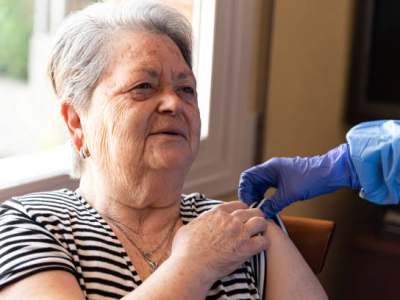Editor's note: This story was revised Jul 19, 2004, to include additional information about the percentage of West Nile virus infections that result in illness.
Jul 15, 2004 (CIDRAP News) Now that West Nile virus (WNV) is in North America to stay, mosquito control is becoming an important task of the public health system, West Nile experts said at a public health convention in St. Paul today.
"There's a reevaluation of mosquito control as a public health function going on now," said Roger Nasci, PhD, an entomologist who studies mosquito-borne viruses at the Centers for Disease Control and Prevention (CDC) laboratory in Fort Collins, Colo. He spoke at the annual conference of the National Association of County and City Health Officials (NACCHO).
WNV, native to Africa and the Middle East, has spread quickly across the United States since it emerged in the New York City area in 1999. Birds serve as the virus's natural host, and mosquitoes spread it to humans after feeding on birds.
Since 1999, West Nile has quickly surpassed four other mosquito-borne arboviruses as a cause of human disease in the United States, Nasci said. There were 9,862 cases of WNV illness reported to the CDC in 2003, and 2,775, or 28%, of those involved encephalitis or a related brain disease, Nasci reported. The disease killed 260 people. (However, only about 20% of people infected with WNV actually become ill, and only about 1 in 150 infected people suffers severe illness with brain inflammation, according to CDC estimates.)
Mosquitoes also spread the viruses that cause St. Louis encephalitis, western equine encephalitis, eastern equine encephalitis, and LaCrosse encephalitis, Nasci said. Cases of St. Louis encephalitis average only about 115 per year, and the other three diseases are even less common.
Nasci said the scientific case for mosquito control as a way to fight West Nile is not yet compelling. "We know that we can document a reduction of mosquitoes through mosquito management," but there is conflicting evidence on whether mosquito control programs reduce human cases of WNV, he said.
A recent study from the Chicago area suggested that mosquito control programs made a difference in WNV infection rates, he said. For example, the Des Plaines Valley district, with an intensive program to kill mosquito larvae, had four West Nile cases per 100,000 people, while the North Shore district, with a less ambitious program, had 51 cases per 100,000.
Similarly, he said, a study from Michigan indicated that people in areas with no mosquito control program had a tenfold greater risk of WNV than those in areas where mosquitoes were controlled.
However, this pattern didn't hold in a comparison of the cities of Fort Collins and Loveland in Colorado: Loveland had a higher rate of WNV cases even though it worked harder on mosquito control, according to Nasci.
Nonetheless, he said mosquito control should be a public health function. He recommended the approach known as integrated pest management, which requires careful monitoring to determine "if, when, and where" to spray or otherwise combat mosquitoes.
Nasci cited a new report from the Association f State and Territorial Health Officials (ASTHO) as a good source of further information on mosquito control (see link below).
In Colorado Springs, Colo., a program that combined mosquito control with public education and cooperation among local governments appeared to succeed in limiting WNV cases last year, according to another speaker at the meeting.
Rosemary Bakes-Martin, MS, MPH, acting director of public health for El Paso County, said the county began girding for the West Nile battle in the fall of 2002. Officials knew that public opposition would preclude spraying to kill adult mosquitoes. Instead, they mounted an effort to kill mosquito larvae countywide at the start of the season, and then followed up with larva-killing measures in areas where infected birds were found.
Later in the season, the county took steps to kill mosquito larvae in areas where human West Nile cases turned up, Bakes-Martin said. Patients "all seemed to know when they were bitten by the mosquito that got them ill," she explained. "I'd say in 90-some percent of instances, we found within a hundreds yards a place where there was mosquito breeding."
Bakes-Martin said the county also used thousands of "tip cards," posters, and brochures in two languages to educate the public about protecting themselves from mosquitoes. Other measures included generating heavy news coverage of West Nile and enlisting the help of all the county's cities and towns in the public education effort.
By October, El Paso had the second lowest WNV case rate among Colorado counties, fewer than 20 cases per 100,000 people, according to Bakes-Martin. "We felt like we did something right," she said.
In response to questions, Nasci ventured a prediction about the future of WNV in the United States. He said the pattern for West Nile could evolve to resemble that of Japanese encephalitis in Asia. Modest outbreaks of the disease occur each year, but, depending on weather, it occasionally erupts on a much larger scale, he said.
He said he doesn't expect WNV to become so widespread in this country that most people will develop immunity from having been exposed at some point. In Africa the disease mostly affects children and teenagers, who then develop immunity and are protected in adulthood, he said. "We're not going to find human herd immunity coming into play" in the United States, he said.
See also:
ASTHO report, "Public Health Confronts the Mosquito: Developing Sustainable State and Local Mosquito Control Programs"


















